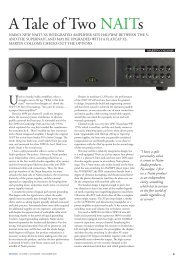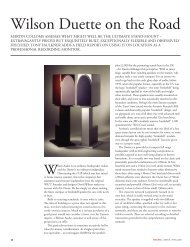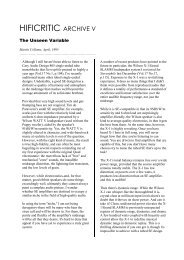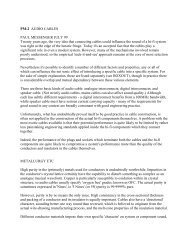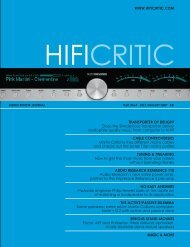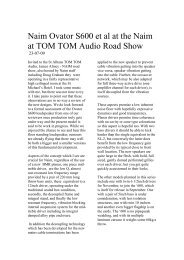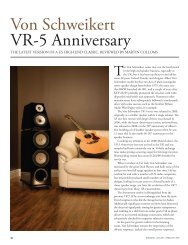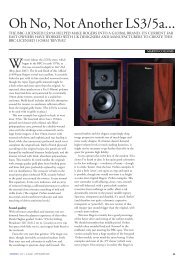You also want an ePaper? Increase the reach of your titles
YUMPU automatically turns print PDFs into web optimized ePapers that Google loves.
FIG.2<br />
The vertical marker is placed at 12.5kHz, and graphically demonstrates <strong>the</strong> declining<br />
final octave, even when measured directly on-axis, with <strong>the</strong> mic on <strong>the</strong> “hottest”<br />
angle. Down 3dB at 12kHz, it was -10dB by <strong>the</strong> 20kHz 1/3-octave band. This graph<br />
also shows <strong>the</strong> output of <strong>the</strong> bass driver and its excessive level when interfaced with<br />
<strong>the</strong> tweeter, typically 6-8dB too high. (Note that this curve will en<strong>com</strong>pass some<br />
significant nearfield effects, particularly in <strong>the</strong> bass.)<br />
FIG.3<br />
Fig.3 is a <strong>com</strong>posite of <strong>the</strong> axial <strong>response</strong>, plus <strong>the</strong> output at 10 degrees above axis,<br />
and 30 degrees off <strong>the</strong> horizontal axis (dashed curve and toward <strong>the</strong> centre stage).<br />
This shows that <strong>the</strong> output off-axis is pretty well maintained in <strong>the</strong> desired manner.<br />
At 30 degrees to <strong>the</strong> horizontal, <strong>the</strong> 12kHz region picked up a little but with no<br />
significant improvement in <strong>response</strong> extension. On driver integration alone, <strong>the</strong>



